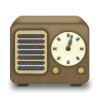Community Media/Workshops/Activities/Radio Bubble
| Work in progress, expect frequent changes. Help and feedback is welcome. See discussion page. |
Contents
Radio Bubble vs. Radio Boring
Exercise on interactivity (Beta). Submitted by Michael David
Overview
A game designed to allow the participants to reflect upon there own experience in order to understand what’s interactive and what’s not.
Participants
Two groups. Each group could have up to ten members.
If there are more than twenty participants there could be several pairs of two groups
Scenario
Radio Boring is a commercial radio station Its owner has just announced that the annual staff trip has been cancelled. In of act of revenge the team decides that they are going to present the most boring radio programme the station has ever had. The duration of the programme is one hour and interaction should be kept to a minimum.
Radio Bubble is a community radio station.
The station has entered for the most interactive Radio station challenge. The staff is enthusiastic and determined to put up a highly interactive 1-hour radio show.
Time
45-60 minutes in all
15 minutes- briefing 30 Minutes- exercise 15 Minutes- debriefing
Materials
- Sheets of paper to draw and present Paper to to preset Index cards
- Coloured pens
- A microphone
- Recording facilities (optional )
Flow
Brief participants.
In both teams each participant could assign a role i.e. - Producer, editor, presenter, musician, script writer, reporter,commentater. call fixer, caller etc
The task is to plan for a half hour show and present the menu of the programme live, which is the first five minitues of the programme. .
The Boring radio team will have to explain how they minimized the interaction and how it helped to make the programme boring.
The bubbling team will explain what they plan to do to make the programme lively.
Debrief
Each team will give a rateing between 1-10 to the opposite team evaluating the level of objectives achieved.
- 1-4 Poor-could do better
- 5- Satisfactory – Not bad
- 6-10 – Good – Well done
The team with the most points wins.
Before tallying ask each participant to explain the reasons for giving a particular mark.
First encourage individuals to speak and then ask teas to comment on the opponents to comment.
Bring in the fellow trainers and a few others as the jury ask them to comment and announce the total score and winner.
